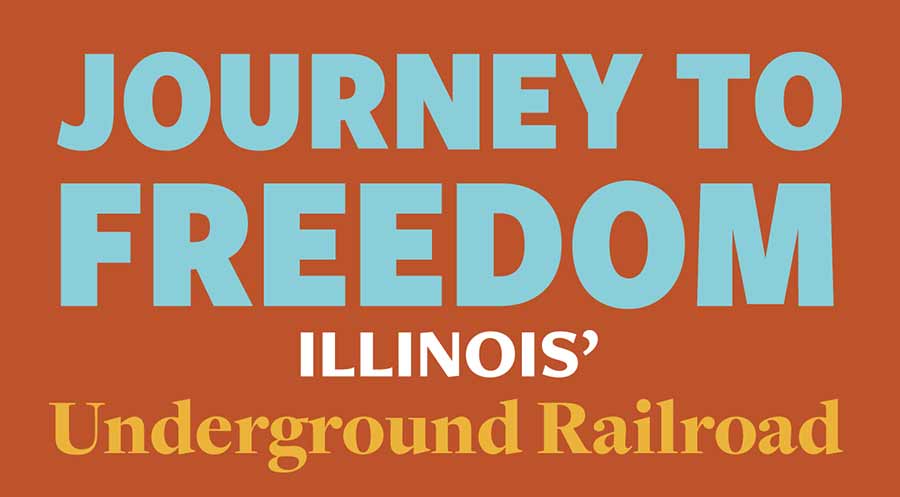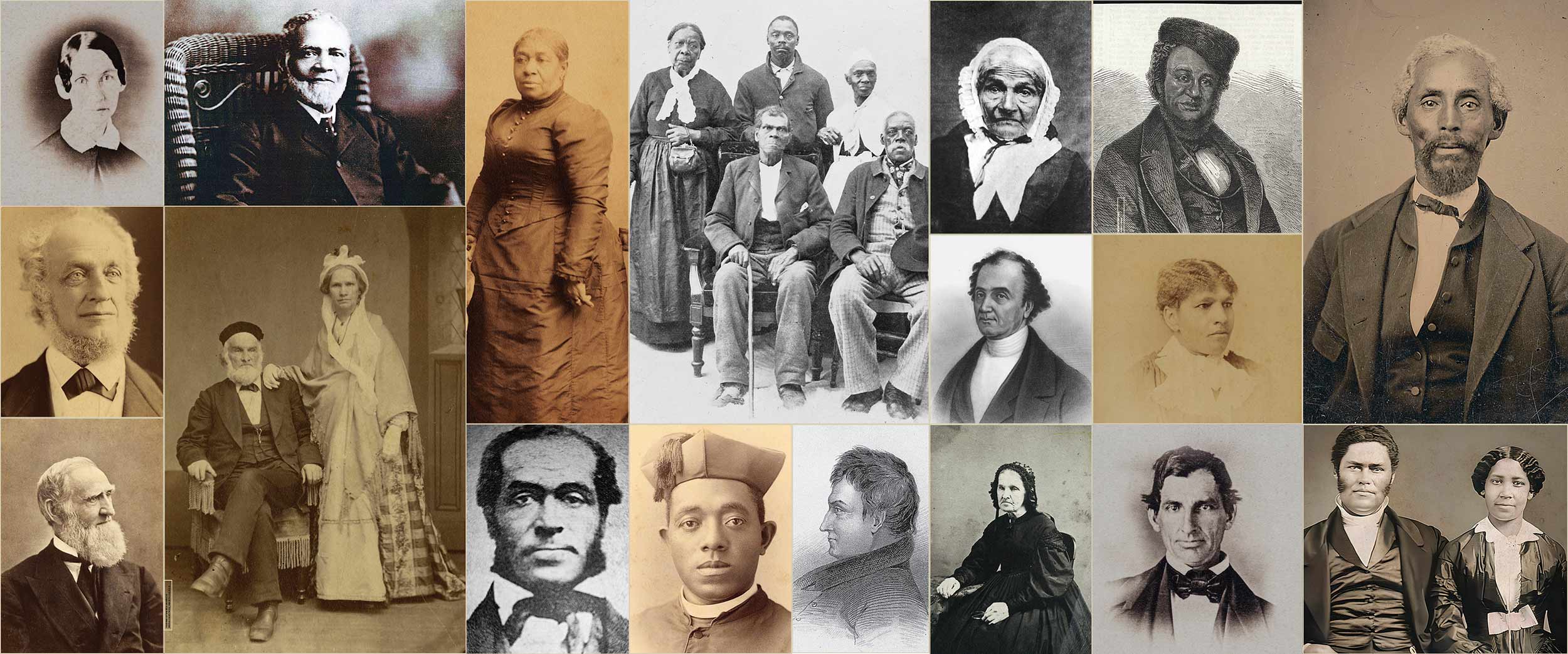The work of the Illinois Underground Railroad was accomplished by many people across a wide spectrum. Rich and poor, black and white, and from all areas of the state, people worked together to assist freedom-seekers to reach the hope of a better life.
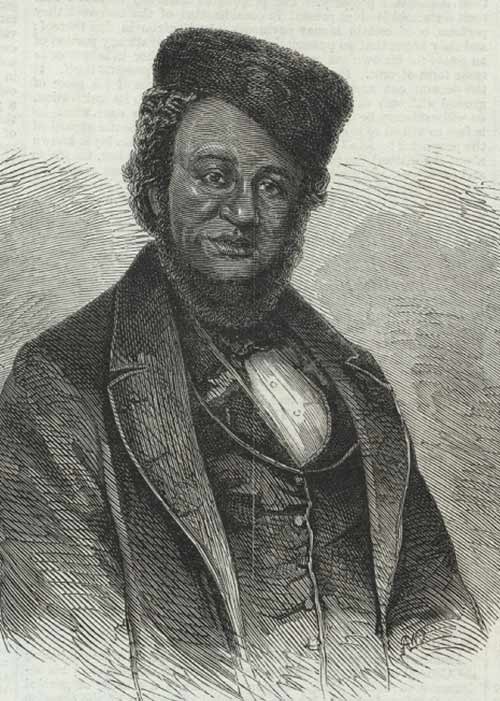
John Anderson
John Anderson, originally named Jack Burton, was born enslaved to Moses Burton around 1831 in the slave state of Missouri. In 1850, he married an enslaved women named Maria Tomlin who lived a short distance away. In 1853, Anderson was sold and separated from his wife and child and was not allowed a pass to travel to visit them. Later that year he fled his enslavement in search of freedom in Canada. While still in Missouri, Anderson encountered a farmer and slave hunter Seneca Digges. Anderson fled and was pursued by Digges who eventually cornered Anderson. He stabbed Digges in self-defense and fled continuing his journey. Digges later died of his wounds.
Anderson travelled through Illinois and eventually from Detroit, MI into Windsor Ontario. He started a new life working in Canada moving several times between 1854-1860 and changing his name to avoid being taken back into slavery. In 1860, Anderson was betrayed by a friend after revealing his story and he was soon arrested. While slavery was illegal in Canada in 1860, the Secretary of State appealed to the British government to extradite Anderson to the United State to stand trial in Missouri for the murder of Seneca Digges. The extradition requested failed because Anderson was enslaved and seeking freedom when he killed Digges. The trial and new surrounding the trial caused a sensation in the United State, Great Britian and Canada. Anderson later travelled to England to speak about his experiences. Learn more
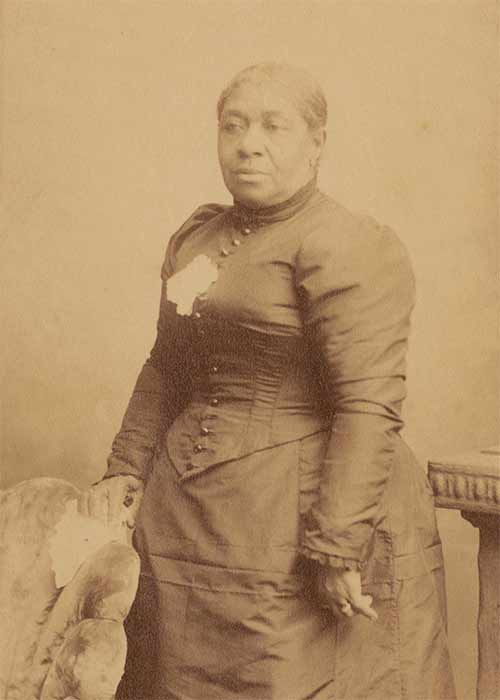
Emma Jane Atkinson
Emma and her husband Isaac Atkinson arrived in Chicago in 1853 from New York. Emma was born in Connecticut of mixed racial backgrounds that included African American and Cherokee ancestry. Emma was very involved in the Underground Railroad organizing assistance for Freedom Seekers through Quinn Chapel in Chicago. She and her husband became leaders in Chicago’s black community. Learn more
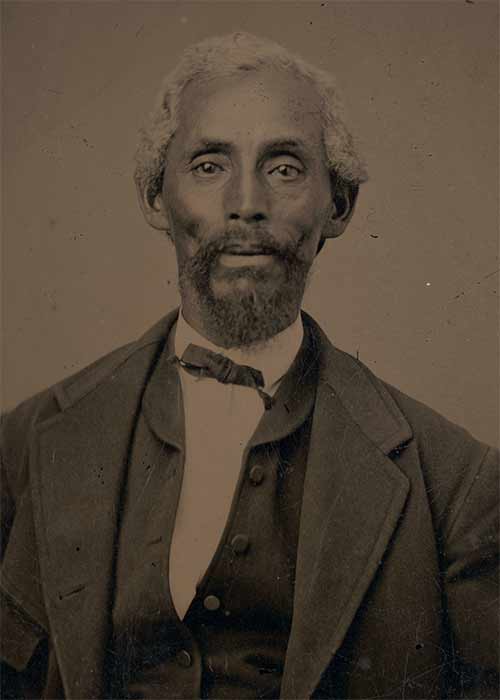
Isaac Atkinson
Isaac Atkinson and his wife Emma arrived in Chicago in 1853 from New York. Isaac ancestry included both African American and Cherokee ancestry. Isaac ran a successful omnibus line (horse-drawn wagons) and later worked for the Chicago and Northwestern Railroad. He and his wife Emma were very involved in Quinn Chapel in Chicago assisting Freedom Seekers. He and his wife became leaders in Chicago’s black community. Learn more
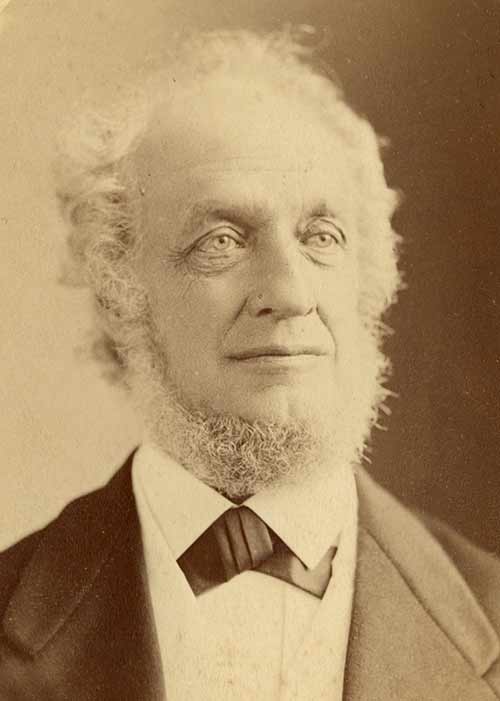
Edward Beecher
Edward Beecher was born in 1803, the son of Lyman Beecher and brother to abolitionists Henry Ward Beecher and Harriet Beecher Stowe, author of Uncle Tom’s Cabin. An Ivy League educated man; Beecher served as a pastor in Boston. Then, he served as the first president of Illinois College from 1830 to 1844. He was instrumental in helping found Illinois’ first anti-slavery society. As a person of great conscience, Beecher was also a voracious writer on the causes that he cared about. He wrote many antislavery works, such as Statement of Anti-Slavery Principles, written in 1837. Edward Beecher was editor of the Christian Union and the Congregationalist magazines. As a thought leader of the abolitionist movement, his impact was wide, and he died, after a full life, in 1895. Learn more
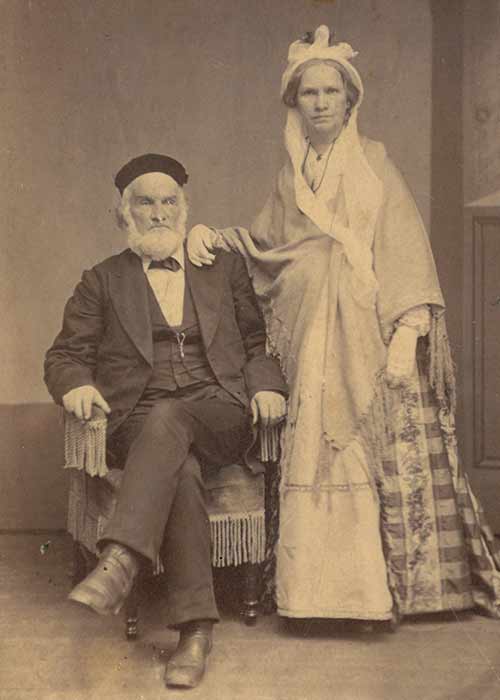
Jonathan & Mary Blanchard
Jonathan and Mary Blanchard were strong abolitionists. Jonathan was a lecturer for the American Anti-Slavery Society and was a delegate in London at the World’s Anti-Slavery Convention. He was an ordained Presbyterian minister and was the minister for several churches. Jonathan and Mary Blanchard moved to Galesburg, Illinois where Jonathan was installed as President of Knox College in 1845. His presidency was terminated in 1858 because of his strong abolitionist views. He was instrumental in helping found Wheaton College in 1860 and served as the school’s first President until 1882. Blanchard Hall on Wheaton Campus was a stop on the Underground Railroad.
Learn more
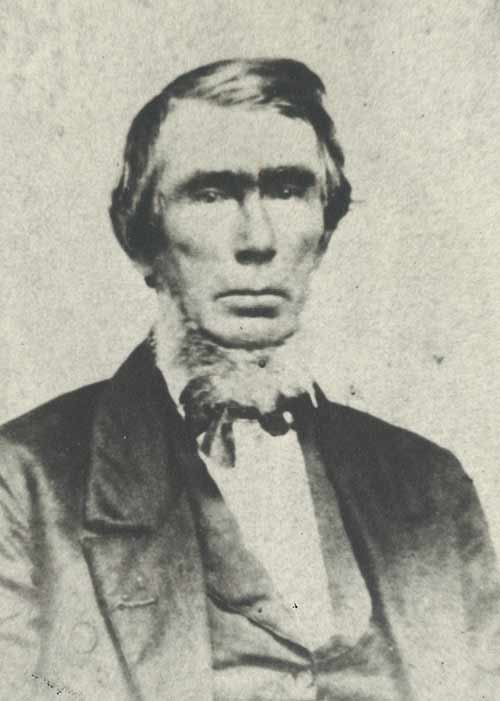
Israel Blodgett
Israel Porter Blodgett was born in Amherst, Massachusetts in 1797 and had strong abolitionist leanings. He learned the trade of blacksmithing. He became an apprentice blacksmith at the US Armory in Springfield, Massachusetts and later worked at Harper’s Ferry in Virginia. At Harpers Ferry some of his co-workers were enslaved and he lost his job after helping an enslaved man escape. Israel returned to Massachusetts and married Avis Dodge in 1820. Israel and Avis moved to Downers Grove, Illinois in 1836 and were early settlers of Downers Grove, Illinois. Israel farmed and operated a blacksmith shop. In 1846, Israel built a one-and-a half story home. This home became a station on the Underground Railroad. The Blodgett’s helped freedom seekers with food, clothing and transportation to Chicago. Israel Blodgett died in 1861, and he is buried in the Main Street Cemetery in Downtown Downers Grove. Learn more
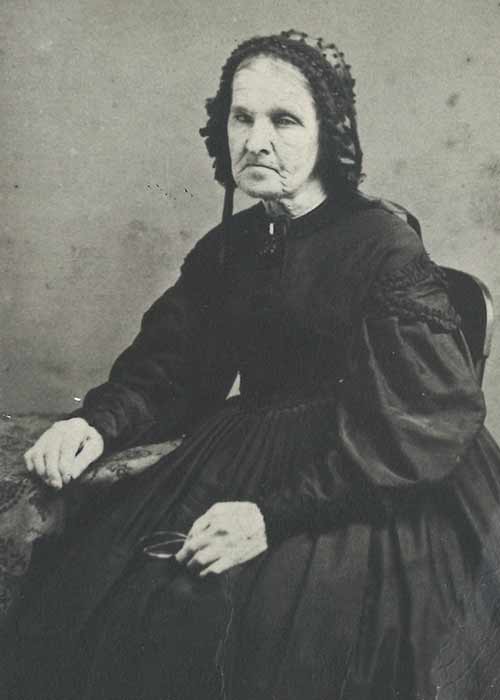
Avis Blodgett
Avis Dodge Blodgett was born in 1796 in Massachusetts. She married Israel Blodgett in 1820. They were early settlers in Downers Grove, Illinois arriving in 1836. Israel farmed and operated a blacksmith shop while Avis kept the house and educated her children. Providing her children with a good education was important to Avis. A strong abolitionist like her husband Avis was opposed to slavery and Israel and Avis’s home was a station on the Underground Railroad from the 1840s to early 1860s. The Blodgett’s helped freedom seekers with food, clothing and transportation to Chicago. Avis Blodgett lived to be 86 years old and died in 1882. Learn more
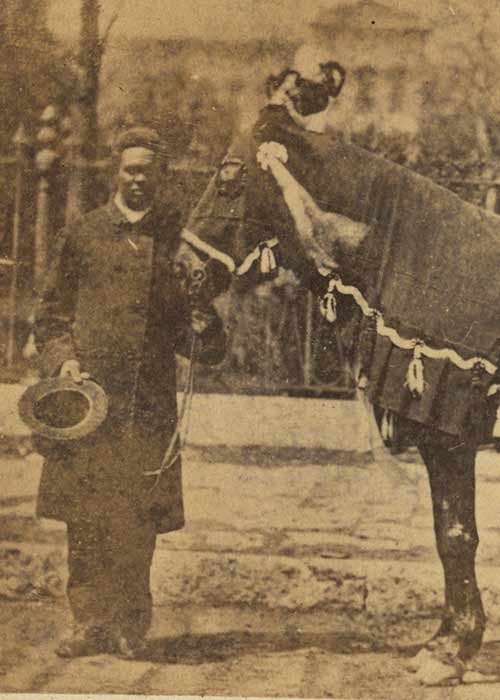
Henry Brown
Henry Brown was born free in Raleigh, North Carolina in 1823. In 1846, he became licensed to preach in the African Methodist Episcopal (AME) Church. He moved to Paris, Illinois in 1847 where he met his wife, Mary Ann King. They were active in setting up AME churches in Illinois. They moved to Springfield in 1855 where Henry Brown did odd jobs for Abraham Lincoln in addition to his ministry obligations. He was active in the community of Quincy, Illinois as well and served as a conductor on the Underground Railroad. After Abraham Lincoln’s death Brown was asked to lead Lincoln’s horse “Old Bob” in the funeral procession in Springfield, Illinois. Henry Brown remained active in the AME Church and died in 1906 and is buried in Oak Ridge, Cemetery. Learn more
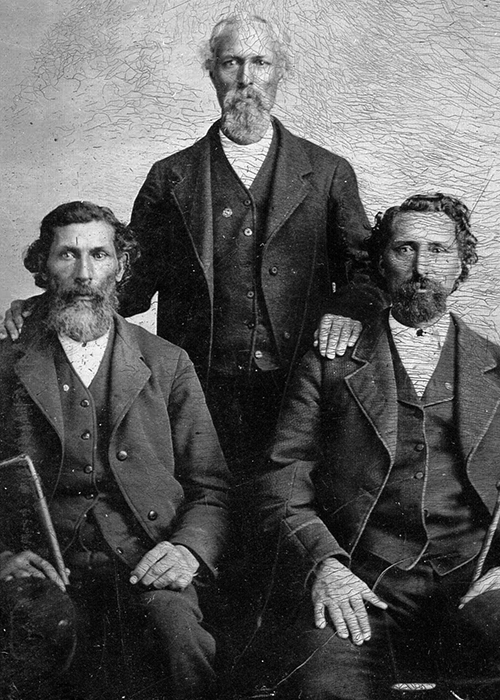
Simeon, Alexander, and Thomas Clark
The Clark family moved to the town of New Philadelphia, founded by “Free” Frank McWorter. The families knew each other intimately and the Clarks were also involved in the Underground Railroad in New Philadelphia and later Quincy. Their sister Louisa Clark married Squire McWorter the son of Frank and Lucy McWorter Alexander was the blacksmith in New Philadelphi in the 1850s and 1860s. Simeon and his brother Monroe, not pictured, worked for sawmill owner John Van Doorn on the banks of the Mississippi River in Quincy. Simeon was an engineer and sawyer; Monroe was a blacksmithing laborer. The Clark brothers and business owner Van Doorn were involved in the Underground Railroad in Quincy.
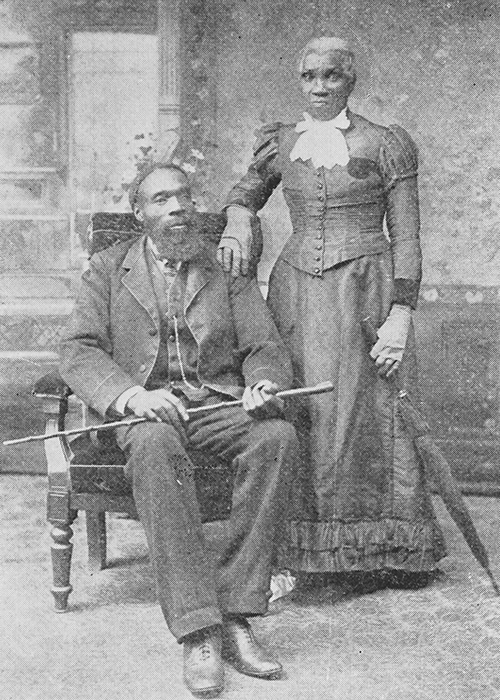
Samuel & Jane Harper
Enslaved in Missouri, with the help of John Brown, Samuel Harper and Jane Cruise and nine other enslaved individuals travelled from Missouri to Kansas, north to Iowa, across Iowa to Illinois, into Indiana across Michigan and eventually to Windsor, Ontario. On their path to freedom the Harpers, walked, rode in wagons, traveled in trains and on a boat. The two Freedom Seekers were married in Springdale, Iowa was a Quaker Justice of the Peace during their three-month journey to freedom. When the group reached Chicago they were assisted by the Wagoners and Jones families. Conductor Allan Pinkerton helped secure the Freedom Seekers railroad transportation from Chicago to Detroit. They travelled over one thousand miles on their journey to Canada. Learn more

Hossack Family
John and Martha Hossack came to Illinois in 1838 attracted by the possibility for work on the Illinois & Michigan Canal. They settled in Gooding’s Grove near Lockport and eventually moved to Ottawa, Illinois where John Hossack became a very successful lumber and grain merchant. Both John and his wife Martha were actively engaged in the Underground Railroad aiding freedom seekers in Illinois. While living in Gooding’s Grove, Illinois during the construction of the Illinois & Michigan Canal John Hossack transported three freedom seekers in his farm wagon Dr. Charles Dyer in Chicago. The entire family was involved in assisting freedom seekers. The Hossack daughters helped feed and clothe freedom seekers while the sons would transport them from the Hossack home in Ottawa north to Harding or Newark. In 1860, Hossack was one of several Ottawans charged and convicted in Federal Court in Chicago for violating the Fugitive Slave Law when he helped freedom seeker Jim Gray escape being taking back to freedom from a courtroom in Ottawa. He was convicted, fined $100 and sentenced to ten days in jail. Learn more
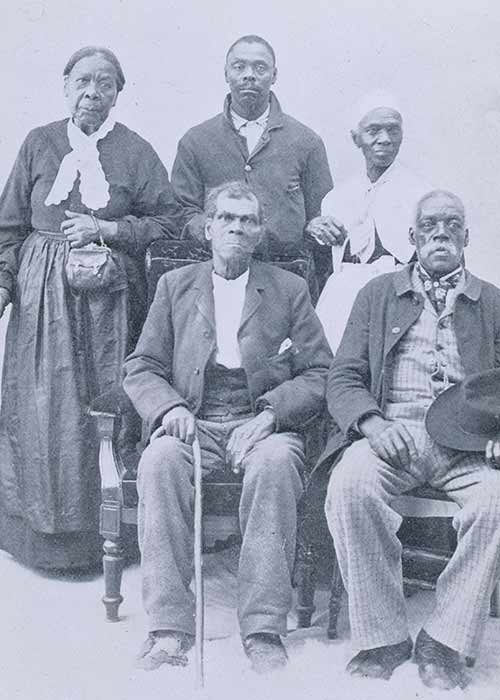
Freedom Seekers (Mrs. Anne Mary Jane Hunt, Mansfield Smith, Mrs. Lucinda Seymour, Henry Stevenson and Bush Johnson)
Each of these Freedom Seekers had a unique journey to freedom. Unfortunately, many of their stories have been lost to history. We do know the story of Henry Stevenson, the man seated in the center of the image. Born enslaved in Missouri, Henry would eventually take his freedom while in Chicago helping to search for two freedom seekers. He took the opportunity to take his own freedom with help from the black community in Chicago and made his way to Canada.

Elizabeth Anna Hudlin
Elizabeth Lewis married her husband Joseph Hudlin in 1855. They became leaders in Chicago’s black community. Elizabeth and Joseph were the first African American family to build their own house in Chicago located at the corner of Taylor and State Street near Dearborn Station. They were very active in Quinn Chapel helping Freedom Seekers and their home and a station on the Underground Railroad. Learn more
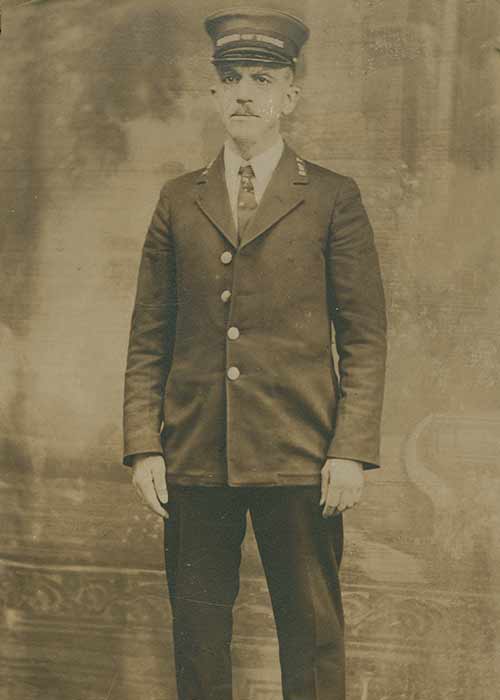
Joseph Hudlin
Joseph Hudlin married Elizabeth Lewis in 1855. They became leaders in Chicago’s black community. Joseph worked as the chief custodian for the Chicago Board of Trade. Elizabeth and Joseph were the first African American family to build their own house in Chicago located at the corner of Taylor and State Street near Dearborn Station. They were very active in Quinn Chapel helping Freedom Seekers and their home and a station on the Underground Railroad. Learn more

John & Mary Jones
John and Mary Richardson Jones were prominent and wealthy African Americans in Chicago and Illinois. John and Mary were born free and met in Memphis, Tennessee where John was working as an apprentice tailor. When Mary’s family moved to Alton, Illinois John followed, and the couple were married in Alton in 1841. They moved to Chicago in 1845. John built a thriving tailor business in Chicago and became a leader in the African American community. They were both active in the Underground Railroad in Chicago hiding freedom seekers in their home. They hosted well known abolitionists in their home including John Brown, Allen Pinkerton and Frederick Douglass.
During the 1847 Illinois Constitutional Convention in Springfield John Jones wrote letters to the Chicago Tribune arguing that Black Illinoisans were entitled to full citizenship including the right to vote. Despite the objections of Black Illinoisians, Illinois passed some very strict Black Laws. The Jones’ and others continued to fight against the Black Laws. In 1864 John Jones published a pamphlet entitled The Black Laws of Illinois and a Few of the Reasons They Should be Repealed. Due to the efforts of the Jones’ and many other black and white leaders the Illinois Black Laws were repealed in 1865. John and Mary Jones continued to be active in Chicago until their deaths.
Learn more
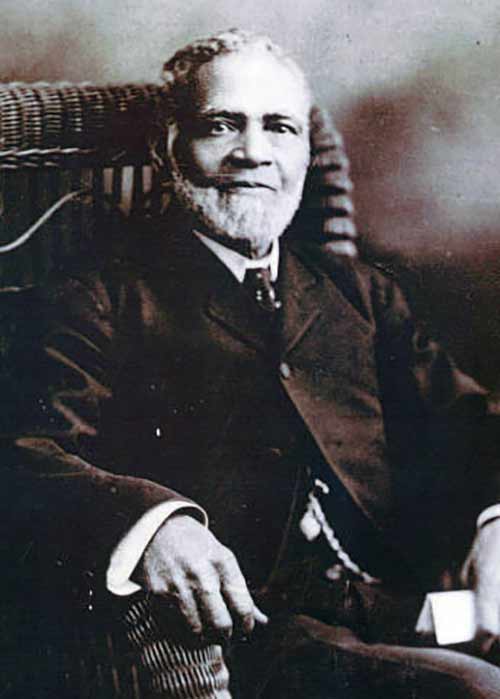
Isaac Kelly
Isaac Kelly was born enslaved in 1825 in Georgia. He was freed by his enslaver’s oldest son and arrived in Alton, Illinois at the age of 15. At the age of 17 he opened a barbershop and worked as a barber for 64 years and became prosperous. Isaac Kelly was a deacon at Union Baptist Church and served as a conductor on the North Star Line of the Underground Railroad. His route was from his home in Alton on George Street along the Illinois River and on to Springfield, Illinois. Learn more
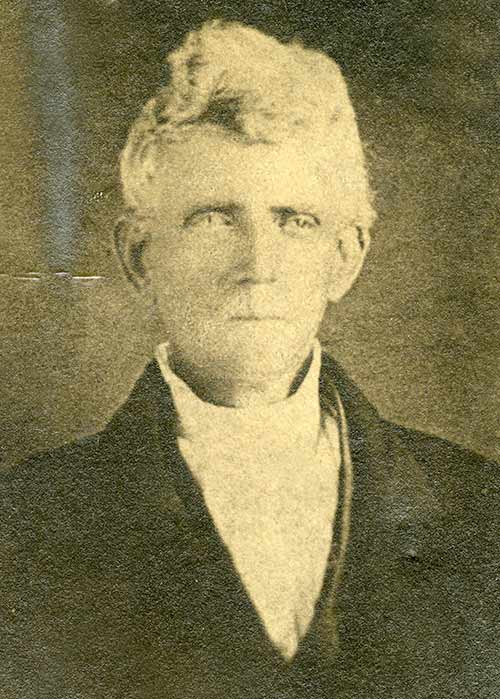
James Leman
James Leman was born in Virginia in 1760. He fought in the American Revolution, was a Baptist minister, Anti-Slavery leader and protégé of Thomas Jefferson. Despite growing up in the slave state of Virginia, Jame Leman was strongly anti-slavery. It is believed that Thomas Jefferson encouraged James Leman to move to Illinois Territory to assist in keeping the future state from becoming a slave state. He moved his family to Illinois Territory in 1786 and helped found the community of New Design, Illinois. He is also credited with establishing the first Baptist churches in Illinois. He died in Illinois in 1823. Learn more
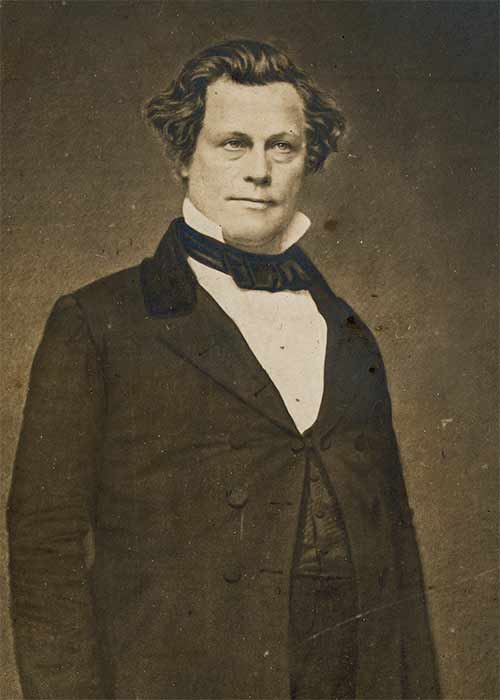
Owen Lovejoy
Owen Lovejoy was an Abolitionist, minister, member of the Illinois legislature, member of the U.S. House of Representatives and a conductor on the Underground Railroad. Born in New England Owen moved to Illinois in 1836 to be with his brother Elijah Lovejoy, the editor of an anti-slavery newspaper who was murdered by a pro-slavery mob in Alton, Illinois. This tragic event led Owen to devote the rest of his life to the cause of abolition. He moved to Princeton, Illinois in 1838 to serve as the minister of the Hampshire Colony Congregational Church and preached his strong abolitionist views. His home in Princeton was a station on the Underground Railroad. In 1854 he was elected to the Illinois legislature and was later elected to the U.S. House of Representatives in 1856 and served four consecutive terms. He died in 1864 of Brights disease. Learn more
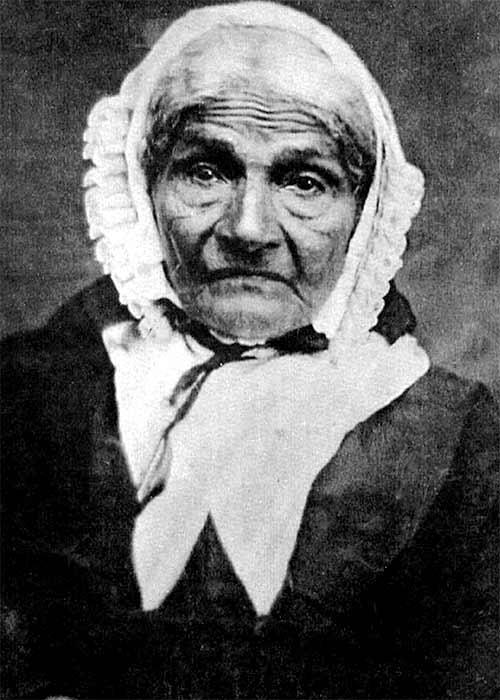
Lucy McWorter
Lucy McWorter was born enslaved in Virginia and married Frank McWorter who was enslaved on a nearby farm in 1799. Her husband was allowed to hire out his own time and keep some of the money. He was able to purchase Lucy’s freedom in 1817 while still enslaved before the birth of their fifth child Squire. In 1830, Frank, Lucy, and their freed children left Kentucky to begin their trek to the free state of Illinois to settle on land that he had purchased in Pike County. They became the first settlers of what was then known as Hadley Township in 1831. Frank and Lucy have a successful farm in Illinois that eventually grows to 280 acres. In 1836 Frank McWorter established the town of New Philadelphia, the first town in American platted and legally registered by an African American. Frank and Lucy use the money from the sale of town sites to purchase members of the family still enslaved. By 1857 all Frank and Lucy’s children, grandchildren, and great grandchildren had been purchased out of slavery by the family and are free.
The McWorters farm and the community of New Philadelphia were stations on the Underground Railroad. The McWorter were always willing to help freedom seekers on their way north to freedom. Lucy no doubt assisted by feeding and clothing the freedom seekers. Lucy’s son Frank Jr. had been a freedom seeker and lived in Canada for a time. There were many instances when Lucy’s sons helped freedom seekers all the way to Canada. Lucy McWorter died in 1871 in New Philadelphia. Learn more

Solomon McWorter
Solomon McWorter was born enslaved in Pulaski County, Kentucky in 1815 to Frank and Lucy McWorter. When he was fifteen his parents who had purchased their freedom and his free-born siblings left him behind in Kentucky to start a new life in Illinois. Five years later Frank McWorter returns to purchase his son’s freedom when Solomon was 20 and they both return to Illinois. In 1836 Solomon helped his father found the town of New Philadelphia, Illinois. The first town in American platted and legally registered by an African American. Solomon was a cabinet and furniture maker and co-owner of the firm Pottle & McWorter in New Philadelphia. Solomon’s son John recalled that Solomon assisted runaway slaves at the risk of his life and liberty to help many slaves on their way to freedom in Canada. The McWorter family not only gave freedom seekers information about the how to get to Canada in many instances Solomon and his brothers Frank Jr., Squire, and Commodore travelled to Canada to assist the fugitives. In 1867 at 52 years of age, Solomon McWorter was granted a U.S. patent for a sorghum evaporator which readily evaporate sorghum syrup which was preferred by abolitionists. Sorghum has come to the U.S. in the 1850’s. Solomon was the first African American to obtain a patent in Illinois and the eighth in the nation. Solomon McWorter died in 1879 and is buried in the New Philadelphia Cemetery.
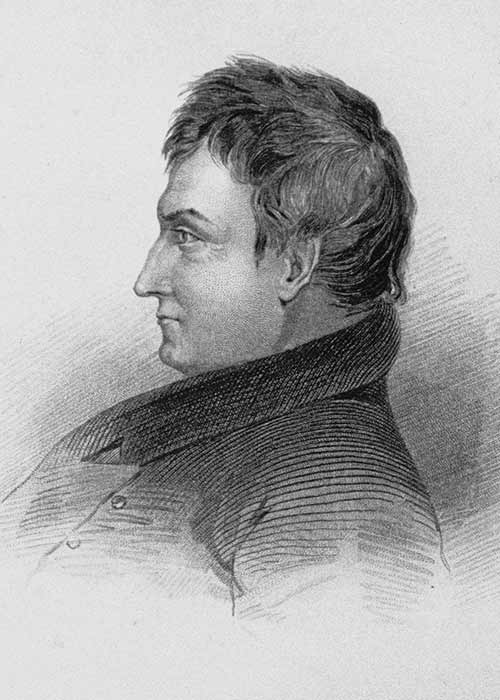
David Nelson
David Nelson was an abolitionist, doctor, and Presbyterian minister. He founded the Mission Institute in Quincy. Its main purpose was to train young men for ministry and missionary work. David Nelson was staunchly anti-slavery and passed these views on to his students at the Mission Institute which also was a station on the Underground Railroad. Some of his students were later arrested in Missouri for assisting Freedom Seekers. Learn more

Lucy Pettengill
Lucy Pettengill was married to Moses Pettengill a successful businessman in Peoria. She was an abolitionist and the founder and leader of the Female Anti-Slavery Society of Peoria. Lucy and her husband were instrumental in the work of the Illinois State Anti-Slavery Society and very active in the Abolitionist cause. Their home at the intersection of Liberty Street and Jefferson Avenue in Peoria was a station on the Underground Railroad during the 1840s-1860s. Lucy provided the freedom seekers with food, clothing and aid before sending them on their way to Farmington, Lawn Ridge and Princeton. Lucy Pettengill died in Peoria in 1864.

Moses Pettengill
Moses Pettengill was born in New Hampshire and married Lucy Pettengill in 1833, and they moved to Peoria, Illinois. Moses became a successful hardware merchant but had other businesses including a shoe factory. He and his wife Lucy were strong Abolitionists and Moses was the founder and leader of the Peoria Anti-Slavery Society. The couple’s home at the intersection of Liberty Street and Jefferson Avenue in Peoria was a station on the Underground Railroad during the 1840s-1860s where they sheltered freedom seekers. Moses served as a conductor guiding freedom seekers on their journey north to Farmington, Lawn Ridge and Princeton.
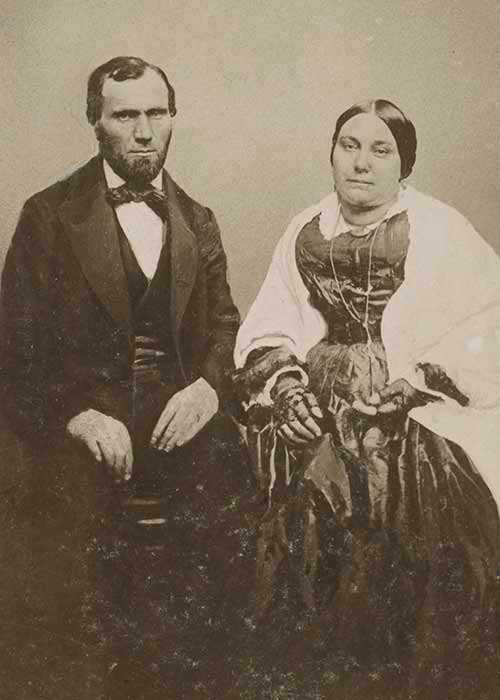
Allan & Joan Pinkerton
Allan & Joan Pinkerton emigrated to the United States from Scotland in 1842 to Dundee, Illinois near present day Chicago. The Pinkerton’s were strong abolitionists and their home in Dundee and later Chicago was a haven for freedom seekers. He taught them his trade of barrel making. Allan was worked with other white and black abolitionist leaders in Chicago to organize transportation and assist freedom seekers in Chicago and on their journey to Canada. A barrel maker by trade Allan Pinkerton gravitated to police work and would eventually organize the Pinkerton National Detective Agency in 1850. His detective agency was very successful, he and his wife would die in Chicago. Learn more

Caroline Quarlls
Caroline Quarlls was born enslaved in St. Louis, Missouri in 1826. At the young age of sixteen, made the choice to seek her freedom in Canada. She travelled by Steamboat to Alton, Illinois then by stagecoach through Illinois to Milwaukee. Pursued by her enslaver, she was hidden in homes of sympathetic abolitionists. She was eventually assisted by Lyman Goodnow who travelled with her south from Wisconsin around Lake Michigan avoiding Chicago through Indiana and Michigan to Detroit. In Detroit she had assistance crossing into Ontario, Canada. It was here that she settled down to have a family, educated herself, and worked, until her death in 1886. Learn more
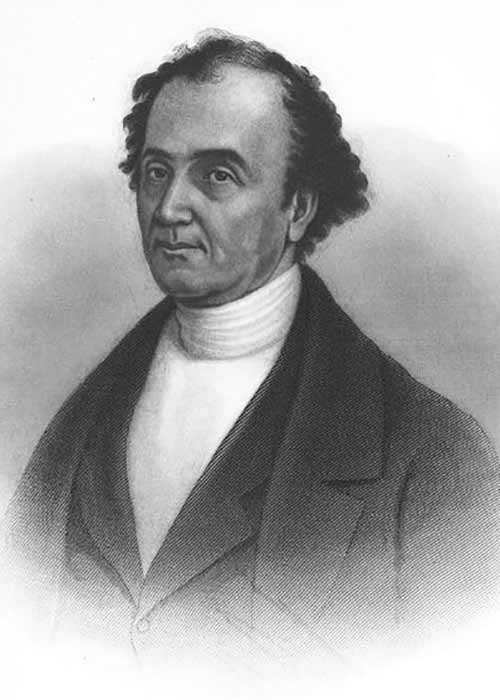
Rev. William Paul Quinn
William Paul Quinn was born in India in 1788. He converted to Christianity and moved to American in 1806. It was here that he became an abolitionist. He became a leader in the African Methodist Episcopal Church (AME) and spent his life establishing AME Churches throughout Indiana, Illinois, Missouri, and Kentucky. These churches were hubs of anti-slavery activism and became part of the Underground Railroad. In 1844, at the age of 56 Quinn was elected as a Bishop of the AME Church. Five years later he became the Senior Bishop and held this position for 25 years. He saw the growth of the AME Church Pennsylvania to California. He died in 1873 at the age of 85 his legacy lives on in the higher education institution Paul Quinn College in Texas.
Learn more
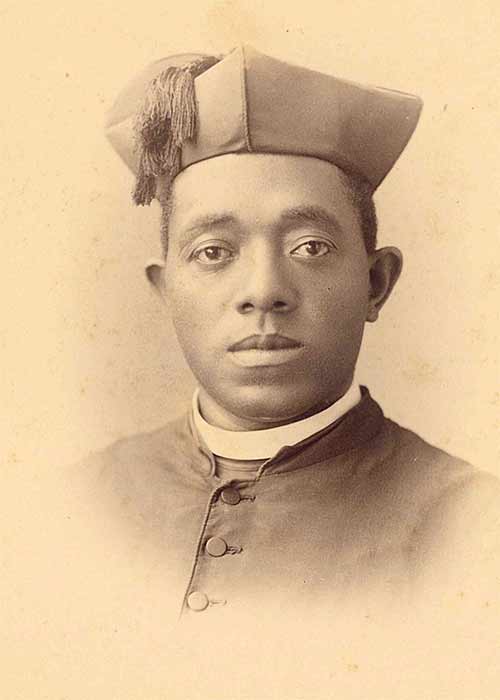
Father Augustus Tolton
Born enslaved in Missouri in 1854, Augustus Tolton would overcome adversity and hardship with his diligence, ambition, and piety to become the first recognized Black American Catholic priest. His family fled slavery in Missouri during the Civil War, to Quincy, Illinois. He started working at age 9 to support his family. Assisted by Father McGirr in Quincy, Tolton was educated and eventually attended college at what is now Quincy University. Due to his race to American Catholic Seminary would allow him entry so he attended seminary at the Sacred Congregation for the Propagation of the Faith in Rome.
He returned to Quincy in 1886 to minister at St. Joseph Parish. After leaving his hometown due to the bigoted hostility of a local white priest, Augustus was transferred to Chicago where he ministered at St. Monicas. Father Tolton led his multiracial flock in mass for a few years, until his tragic death from heatstroke in 1897. Augustus Tolton was born enslaved but died as the first black priest in the United States. Learn more
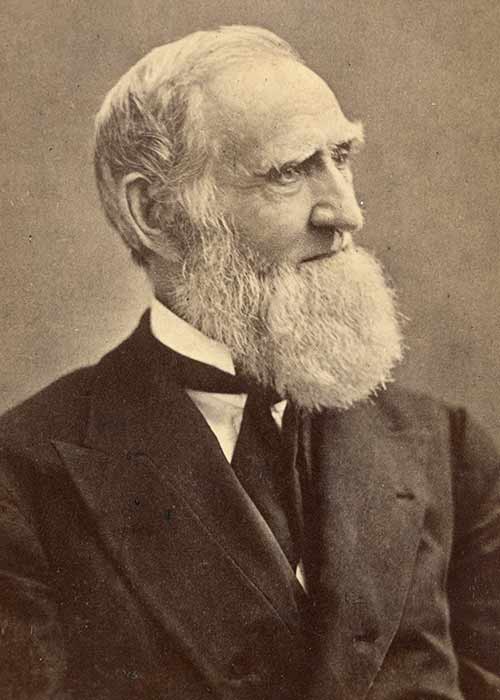
Jonathan Baldwin Turner
Jonathan Turner was an abolitionist, educator and horticulturalist. Educated at Yale University, he became a professor at Illinois College in 1833. His strong anti-slavery stance led to conflict with Illinoi College officials which eventually led to his resignation in 1848. Turner helped establish what became known as the Illinois’ State Teachers Association and was later integral in establishing land grant universities. He helped found what is now the University of Illinois Urbana-Champaign. Learn more
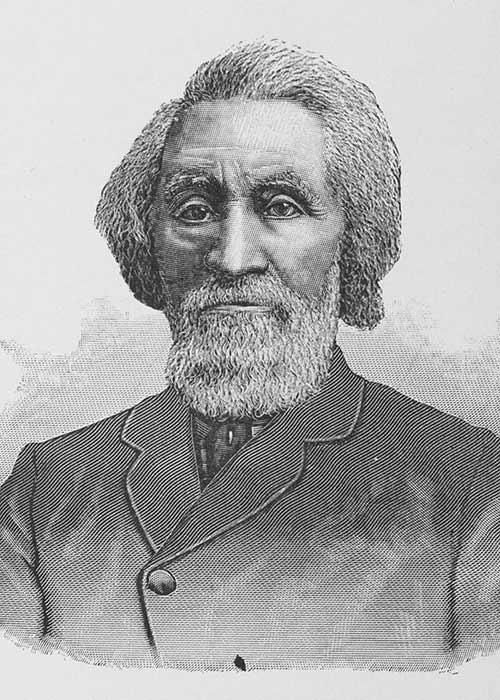
Henry Wagoner
Henry Wagoner was a staunch abolitionist, typesetter and journalist of several radical anti-slavery newspapers, teacher and successful businessman. He was involved in the Underground Railroad in Baltimore, Maryland and later in Illinois. He was born in 1816 in Hagerstown, Maryland to a German father and a free African American mother. His paternal grandmother taught him how to read and he worked as a teacher in Ohio and Missouri before moving to Galena, Illinois. It was in Galena that Wagoner learned to typeset while working for the Northwestern Gazette and later worked for the anti-slavery newspaper the Western Citizen while living in Chicago. He was involved in both the National Colored Convention and Illinois Colored Conventions and was very active in the African American community in Chicago. Throughout his life, Henry Wagoner
was involved in the Underground Railroad in Baltimore, Maryland, Illinois, and Ontario, Canada helping freedom seekers. During the Civil War he helped recruit young African American men to join the Illinois’ 29th United States Colored Infantry. He later moved to Colorado where he would serve in various government positions. He died in 1901 at the age of 84. Learn more
